Center for Marine Sciences, Faro, University of Algarve, Portugal
PROGRAMA
DATA
TEMA
Tópicos
Se algum link não estiver a funcionar é favor enviar informação para rcastil at ualg.pt
TP1
27-30 OUT
Etiquetagem fraudulenta
TP2
03-06 NOV
Epidemiologia HIV
TP3
10-13 NOV
Evolução de lagartos
This interactive, modular lab explores the evolution of the anole lizards in the Caribbean through data collection and analysis. This class was created by the Howard Hugues Medical Institute (HHMI).
The Caribbean is home to about 150 species of anole lizards. In this lab, students investigate how so many species of anoles evolved. The lab includes four modules that cover different concepts in evolutionary biology, including adaptation, convergent evolution, phylogenetic analysis, reproductive isolation, and speciation.
Module 1: Ecomorphs. Species of Caribbean anoles can be categorized into groups, called ecomorphs, according to their body characteristics (morphology) and the ecological niches they occupy. In this module, you will take measurements of lizards from species belonging to four different ecomorph groups.
Module 2: Phylogeny. Analysis of the DNA sequences of certain genes reveals the evolutionary relationships among different anole species. In this module, you will build a phylogenetic tree of anole species to study how the different species evolved.
Module 3: Experimental Data. What happens when lizards that belong to a particular ecomorph group are placed in a different habitat? In this module you will collect and analyze data from an experiment designed to answer that question.
Module 4: Dewlap Colors. No two lizard species living in the same habitat share the same type of dewlap, the flap of skin under their throats that male anoles display to attract females. In this module, you will characterize two species of lizards based on their dewlap color.
Link:
Evolução de sticklebacks
É frequente encontrar-se nos mercados de peixe, supermercados ou em produtos que contenham pescado, etiquetagens erradas por motivos fraudulentos ou enganos genuínos. A utilização de tecnicas moleculares de sequenciação de DNA permite detectar esses erros.
Ficheiro mercado [mercado.fas]
Ficheiro padrão, restantes 19 sequências [lutjanus_padrão_19.fas]
Software: MEGA
O dentista da Flórida infectou os seus doentes com HIV?
Ficheiro FASTA [HIV.fas]
Deriva genética
e selecção natural
A number of interactive questions are embedded within the short film The Making of the Fittest: Evolving Switches, Evolving Bodies, which illustrates how mutations in gene regulatory regions can result in the evolution of major anatomical features.
Many freshwater populations of stickleback fish lack the long spines that project from the pelvis of their marine relatives. These spines are important in the ocean for fending off large predators, so why were they lost in freshwater populations? The film tells the story of how David Kingsley, Michael Bell, and other scientists have identified key genes and genetic switches responsible for the evolution of this remarkable body transformation. Scientists have even documented similar evolutionary changes that occurred in the past, by studying a remarkable fossil record from the site of what was an ancient lake ten million years ago.
This version of the film with embedded questions contains automatic pause points, during which students answer questions about the film to assess their understanding of the concepts presented.
After answering all the questions, students can view and print their answers.
Evolução dos bicos dos tentilhões
A number of questions are embedded within the short film The Origin of Species: The Beak of the Finch, which explores four decades of research on the evolution of the Galápagos finches.
Evolutionary biologists Rosemary and Peter Grant spent four decades tracking changes in body traits directly tied to survival in the famous Galápagos finches. They also identified behavioral characteristics that prevent different species from breeding with one another. Their pioneering studies documented natural selection in real time and revealed clues about how 13 distinct finch species arose from a single ancestral population that migrated from the mainland 2 million to 3 million years ago.
This version of the film with embedded questions contains automatic pause points, during which students answer questions about the film to assess their understanding of the concepts presented.
After answering all the questions, students can view and print their answers.
Evolução dos Corona virus
Several questions are embedded within the short film Great Transitions: The Origin of Birds, which describes some of the most important fossil evidence showing that birds descended from dinosaurs.
The discovery of Archaeopteryx in a quarry in Germany in the early 1860s provided the first clue that birds descended from reptiles. But what kind of reptile? In the last 40 years, scientists have discovered that birds descended from a group of carnivorous dinosaurs called theropods. By following this trail of discovery, the film illustrates many of the iterative and inquiry-based practices of science: asking important questions, formulating and testing hypotheses, analyzing and interpreting evidence, and revising explanations as new evidence becomes available.
This version of the film with embedded questions contains automatic pause points, during which students answer questions about the film to assess their understanding of the concepts presented. After answering all the questions, students can view and print their answers.
This three-part animation series explores the biology of the virus SARS-CoV-2, which has caused a global pandemic of the disease COVID-19.
SARS-CoV-2 is part of a family of viruses called coronaviruses. The first animation, Infection, describes the structure of coronaviruses like SARS-CoV-2 and how they infect humans and replicate inside cells. The second animation, Evolution, describes how these viruses evolve and discusses positive, negative, and neutral mutations. The third animation, Detection, describes the methods used to detect active and past SARS-CoV-2 infections.
Evolução das aves
Several questions are embedded within the short film The Making of the Fittest: Natural Selection and Adaptation, which uses the rock pocket mouse as a living example of natural selection.
This film uses the rock pocket mouse as a living example of Darwin’s process of natural selection. It highlights the research of Michael Nachman, who has quantified predation on rock pocket mice and identified adaptive changes in coat-color genes that allow the mice to travel under the radar of hungry predators.
This version of the film with interactive questions contains automatic pause points, during which students answer questions about the film to assess their understanding of the concepts presented. After answering all the questions, students can view and print their answers.
Selecção Natural e Adaptação
Several questions are embedded within the short film The Day the Mesozoic Died, which tells the story of the scientific quest to explain one of the greatest, long-standing scientific mysteries: the sudden disappearance of the dinosaurs at the end of the Cretaceous period.
The film traces the uncovering of key clues that led to the discovery that an asteroid struck Earth 66 million years ago, triggering a mass extinction of animals, plants, and even microorganisms. This story can be used in several science classes, as it presents a stellar example of many different disciplines (geology, physics, biology, chemistry, and paleontology) contributing to a compelling hypothesis.
This version of the film with embedded questions contains automatic pause points, during which students answer questions about the film to assess their understanding of the concepts presented. After answering all the questions, students can view and print their answers.
A morte do Mesozoico

The Howard Hughes Medical Institute (HHMI) was founded in 1953 by the aviator and industrialist Howard Hughes, with the mission to advance the understanding of basic biomedical research and its ability to improve human health. HHMI supports scientists and educators with the aim of discovering fundamental knowledge about life and enhancing science education.

TP4
17-20 NOV
TP5
24-26 NOV
PERGUNTAS
TP6
2-4-5 DEZ
